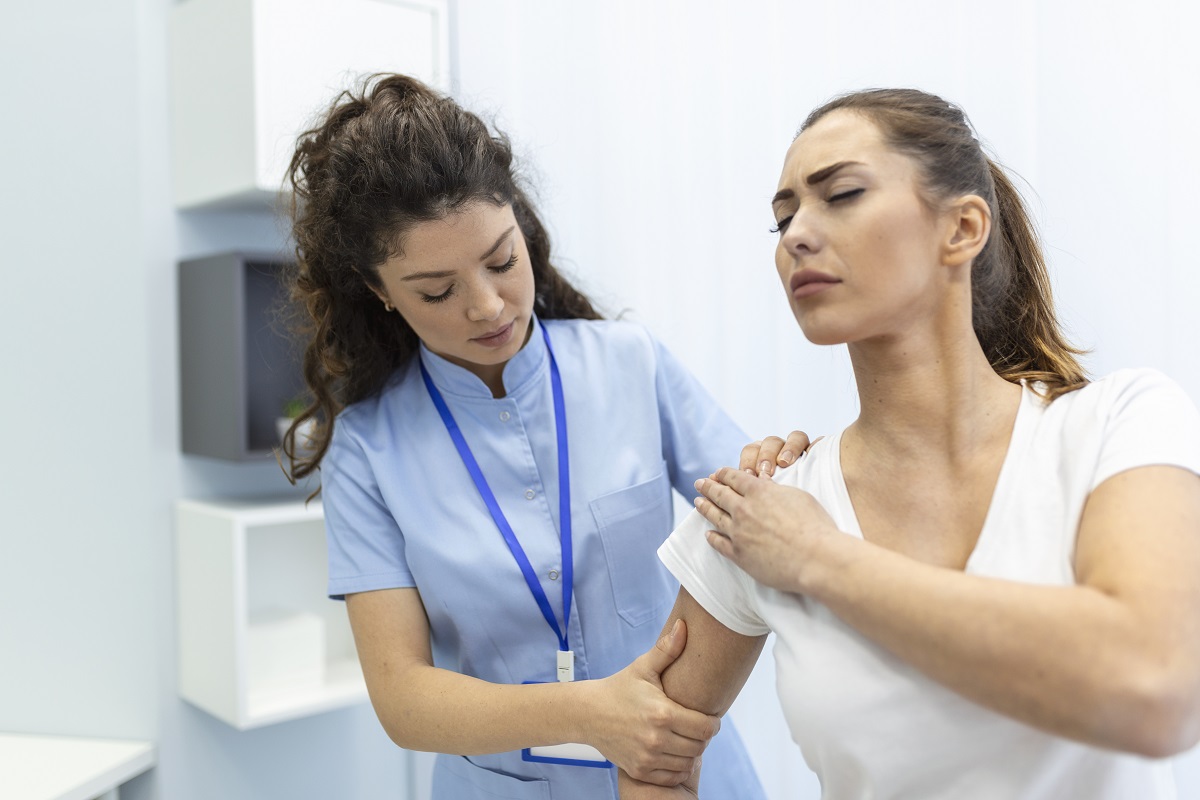The group of tendons that connect the shoulder and facilitate arm rotation and elevation is known as the rotator cuff. These tendons link muscles from the shoulder blade (scapula) to the upper arm bone (humerus) and there are four of them. A sudden impact such as a fall, sport tackle, or trying to catch oneself from falling can result in tearing of one or more of these tendons. Additionally, the tendons can experience degeneration due to the natural aging process, leading to tears.
The rotator cuff is a group of tendons in the shoulder joint that enable a wide range of motion and provide support. Injury to these tendons, known as a rotator cuff tear, is a common cause of shoulder pain in middle-aged and older adults. Symptoms include pain, weakness, and difficulty moving the arm. Treatment options include physical therapy, medication, and surgery in severe cases.

A rotator cuff tear is typically caused by repetitive overhead activities, sports-related activities, or motor accidents that result in pressure on the tendons from the shoulder blade while lifting the arm. Symptoms of a rotator cuff tear include severe pain, weakness in the arm, a crackling sensation during certain shoulder movements, stiffness, swelling, limited range of motion, and tenderness in the front of the shoulder. If non-operative management is unsuccessful or in more active patients, surgeon may recommend a rotator cuff repair.
A rotator cuff repair is typically performed along with a shoulder arthroscopy, which involves making 3-4 small keyhole cuts around the shoulder. Through these incisions, surgeon will use an arthroscopic camera and keyhole instruments to assess the rotator cuff tendon within the shoulder joint.
If necessary, the cartilage of the shoulder, bursa, bone spurs, and labrum will also be treated. This can involve trimming bone spurs that may be causing abrasion to the rotator cuff tendon, debriding an inflamed bursa, and removing loose flaps of torn cartilage and labrum.
The tendon is repaired by grasping the torn end with surgical suture and reattaching it to the bone of the humerus where it had been torn from. This is accomplished by inserting surgical anchors into the bone.
If the quality of the tendon or muscle is poor, a repair may not be possible. In such cases, Dr. Basheer will discuss options with you, including surgical techniques such as superior capsular reconstruction, patch augmentation, and tendon transfers. These options will be discussed with you prior to the surgery.
